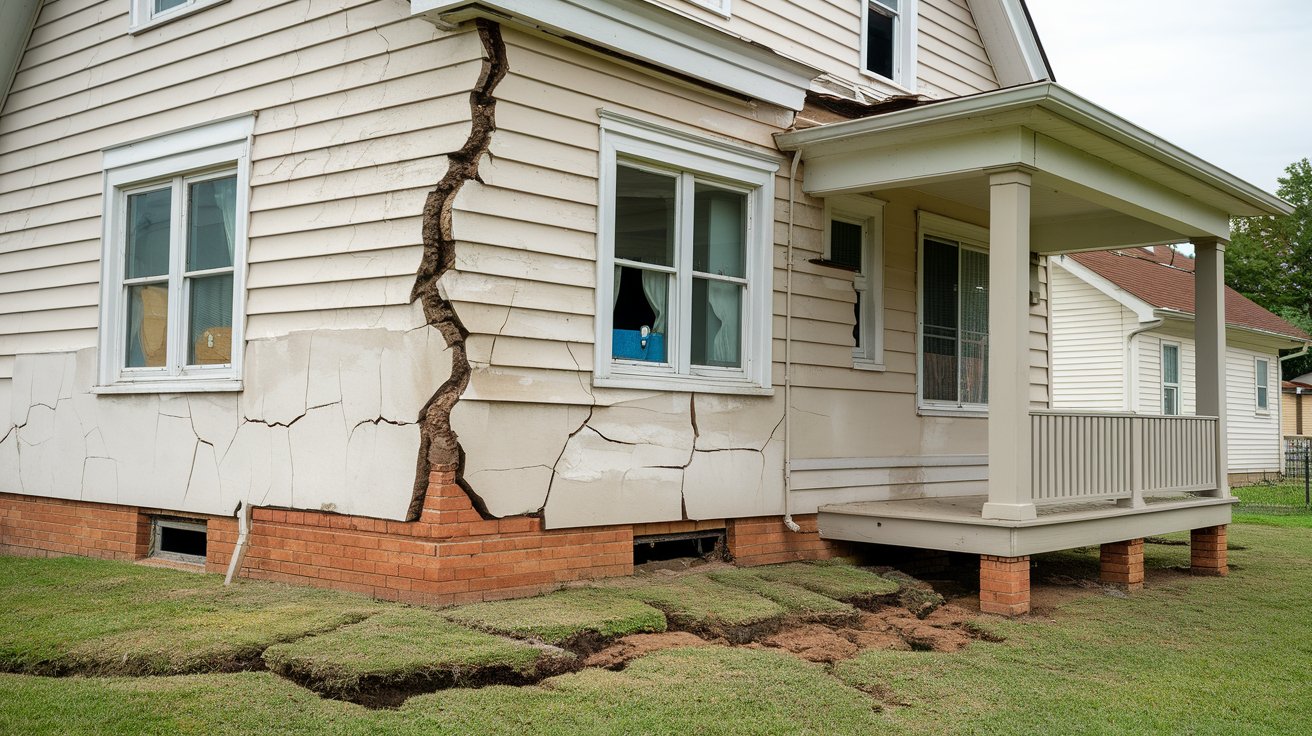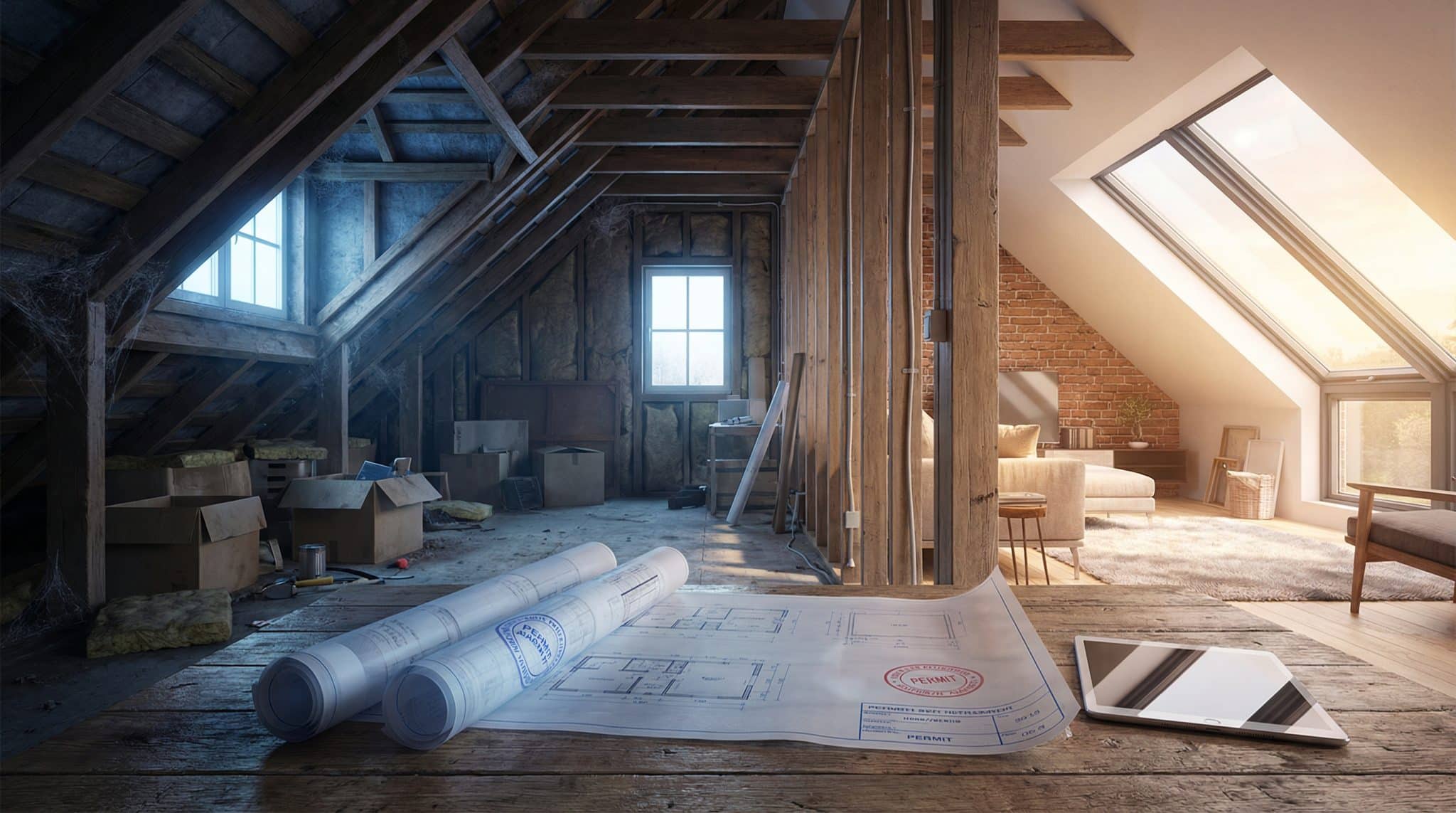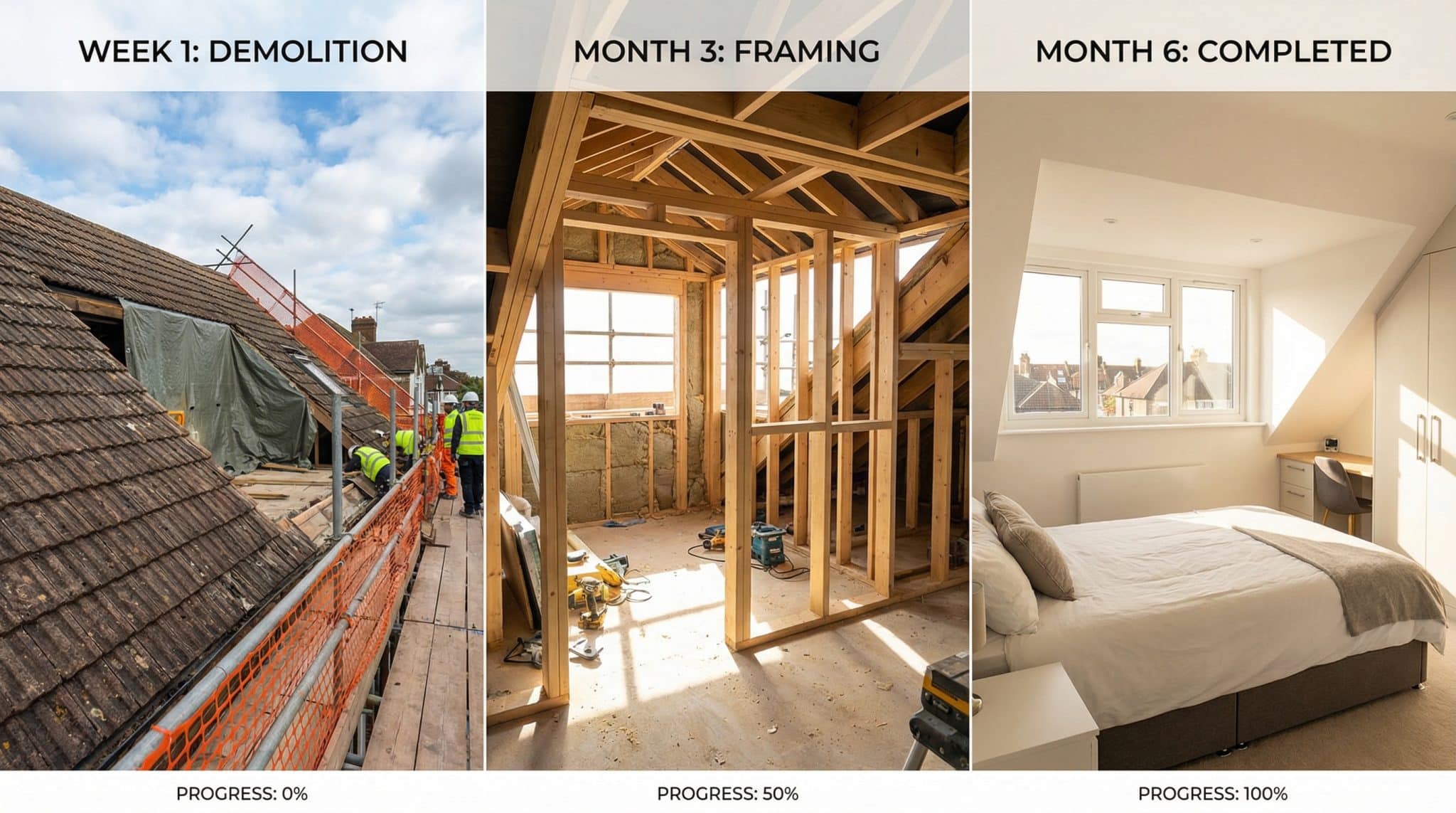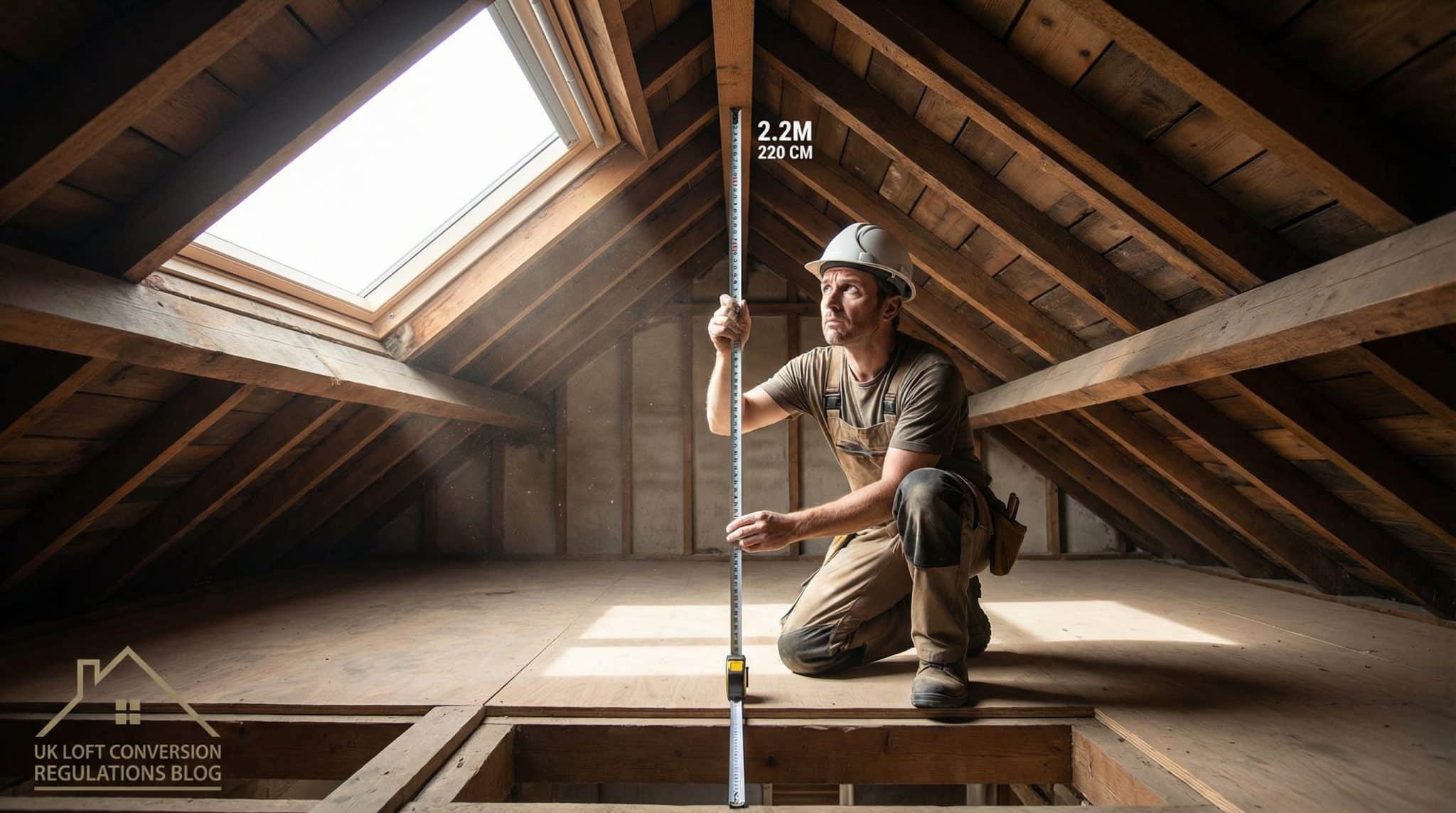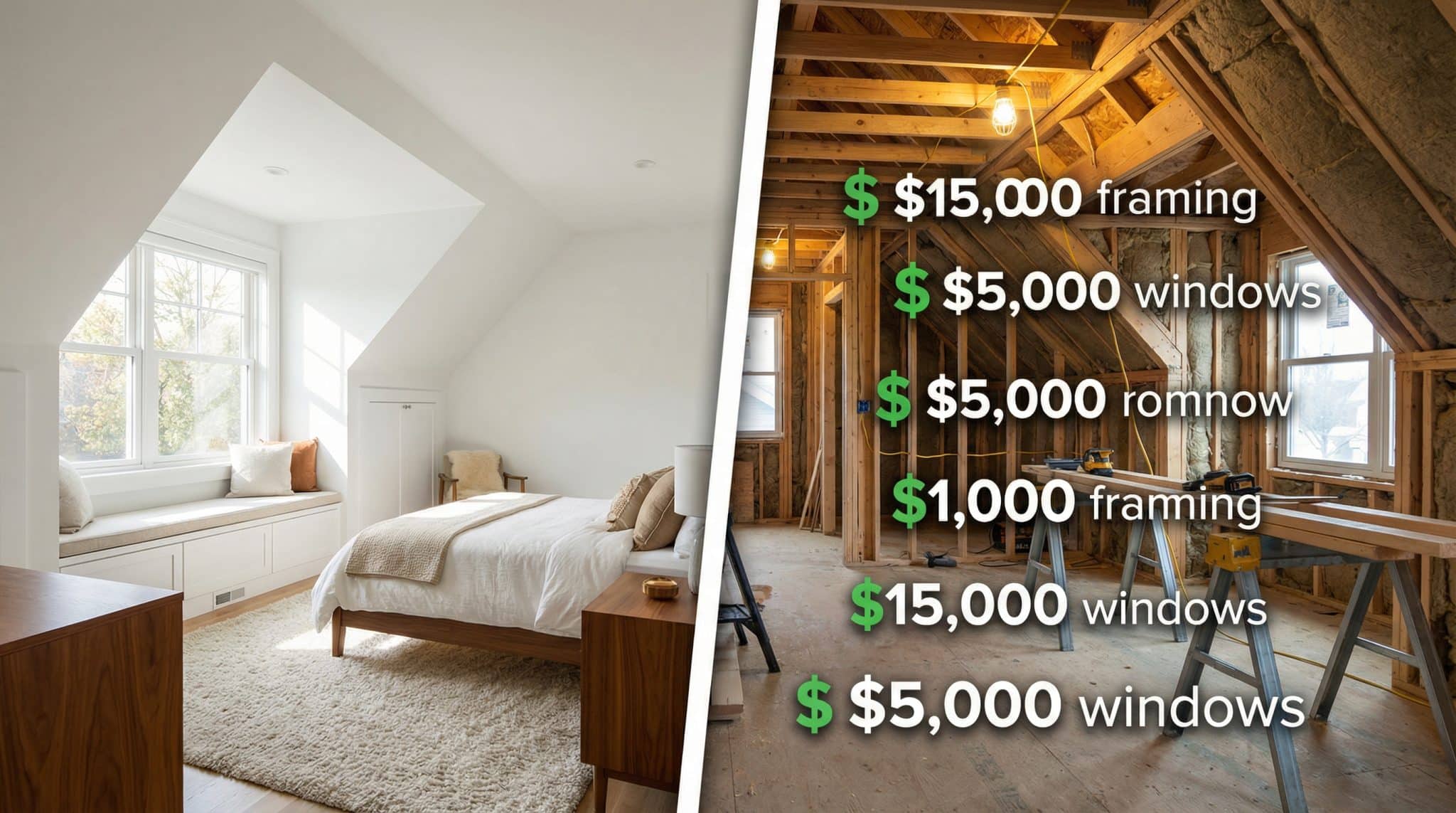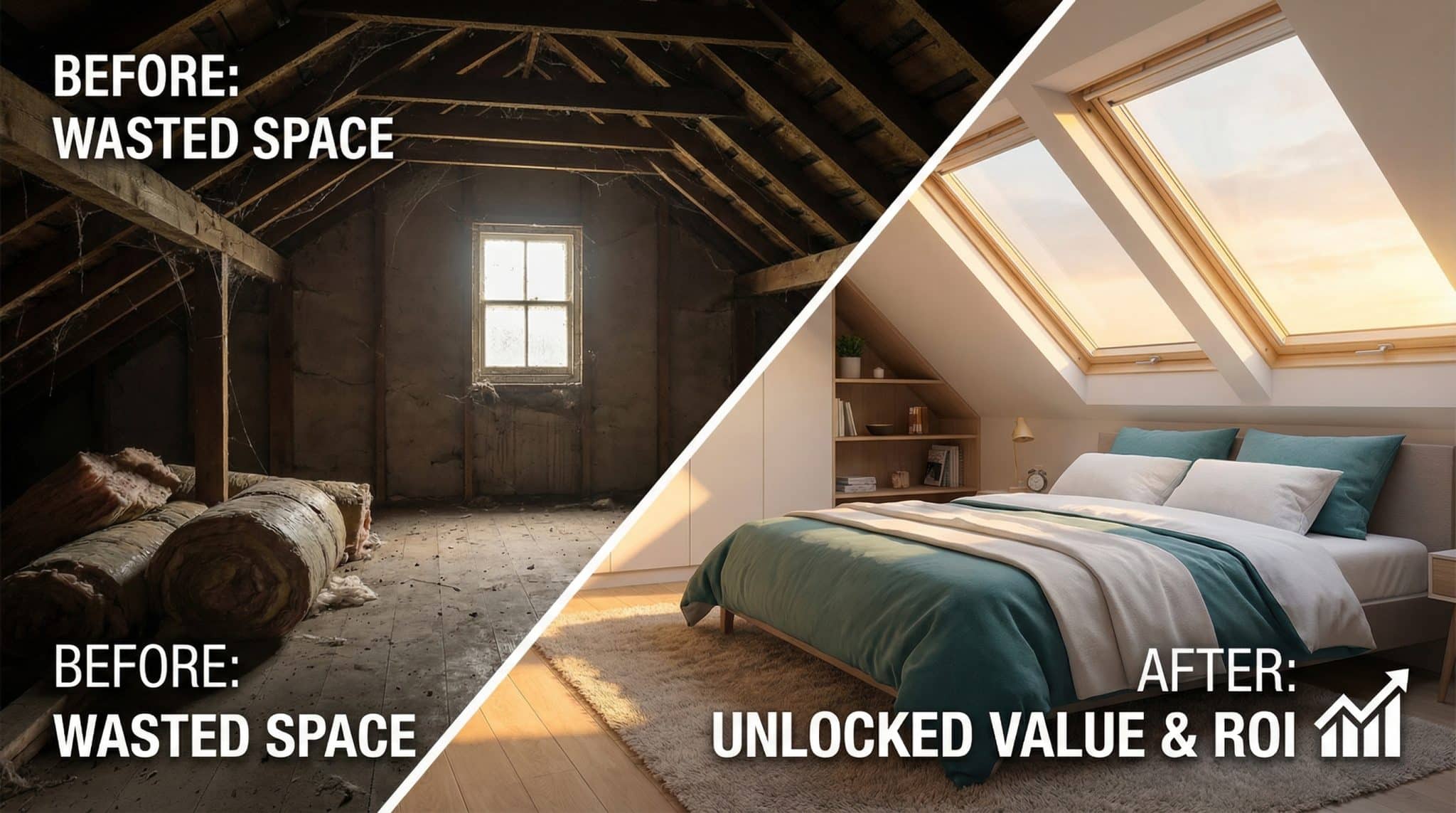Have you noticed new cracks appearing on your walls or doors that won’t close properly?
These could be warning signs of a serious problem beneath your home. Subsidence affects thousands of properties each year, causing structural damage that can be costly to repair.
Understanding the early warning signs helps homeowners take quick action before minor issues become major problems.
This guide covers everything you need to know about subsidence, from spotting the first signs to preventing future damage.
You’ll learn about common causes, repair options, and simple maintenance tips that protect your property’s foundation.
Whether you’re buying a new home or worried about your current property, this information helps you make informed decisions.
What Is Subsidence?
Subsidence happens when the ground beneath a building sinks or shifts downward. This movement pulls the property’s foundations with it.
Different parts of a property may sink at different rates. One corner might drop faster than another, creating stress on the building.
The process can be gradual or sudden. Some properties experience slow subsidence over the years, while others face rapid sinking.
Subsidence differs from settlement, which is normal in new buildings. Settlement occurs evenly, but subsidence creates uneven, ongoing movement.
Early Signs of Subsidence in A Property
Spotting subsidence early can save thousands in repair costs. Properties exhibit various warning signs when their foundations begin to move.
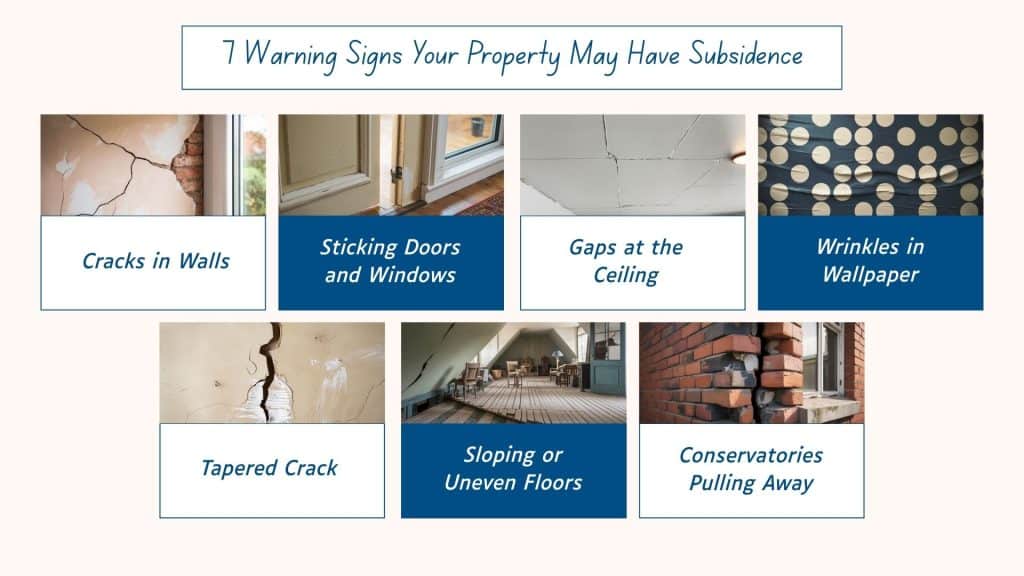
Visible cracks are the most obvious indicator. Subsidence cracks typically appear around windows and doors, running diagonally across walls.
Key warning signs to watch for
- Diagonal cracks wider than 3mm are appearing on interior and exterior walls.
- Doors and windows are sticking, jamming, or failing to close properly.
- Visible gaps are appearing in the ceilings or floor joints.
- Ripples or wrinkles in wallpaper without any signs of moisture damage.
- Cracks that are wider at the top than at the bottom.
- Floors that slope noticeably or feel uneven when walking across them.
- Extensions or conservatories pulling away from the main building structure.
These signs often appear together rather than alone. Multiple symptoms indicate a more serious problem requiring immediate attention.
Common Causes of Subsidence
Knowing what triggers subsidence helps prevent future problems. Several factors can cause the ground beneath properties to move or sink.
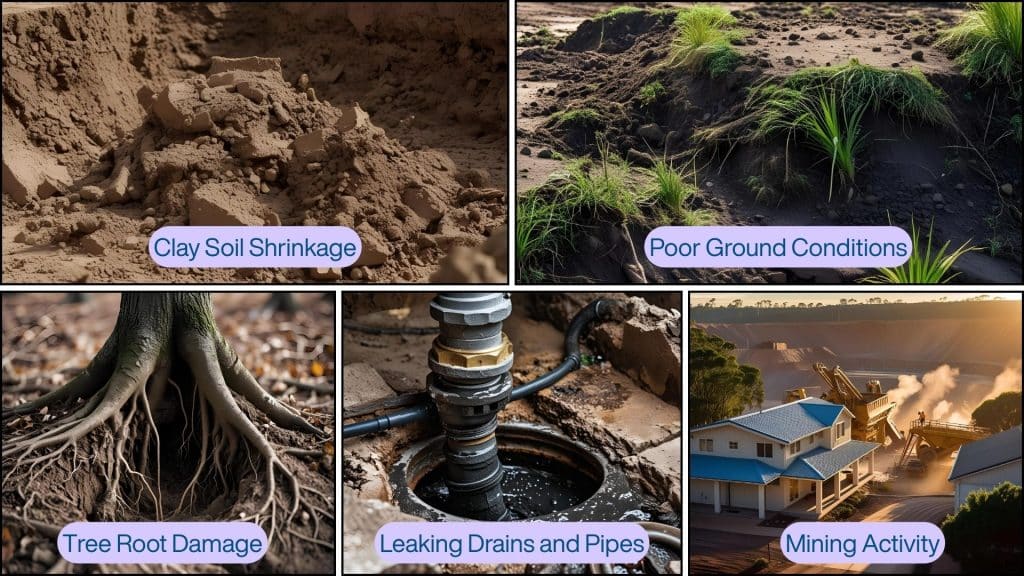
1. Clay Soil Shrinkage
Clay soil expands when wet and shrinks when dry. During hot summers or droughts, clay loses moisture and contracts significantly. This shrinkage creates voids beneath foundations.
Buildings then sink into these empty spaces, causing structural movement. The problem worsens during extreme weather conditions when moisture levels change rapidly.
2. Tree Root Damage
Large trees near buildings extract massive amounts of water from the soil. Their roots can spread far wider than their visible canopy, reaching under foundations.
This water extraction dries out the ground, especially in clay soils. The resulting soil shrinkage leads to foundation movement and minor subsidence cracks.
3. Leaking Drains and Pipes
Underground pipe leaks wash away soil particles over time. This erosion creates hollow spaces beneath the property’s foundations. Water constantly flowing underground removes supporting soil.
Damaged drains also soften the surrounding ground. Foundations lose their firm support and begin sinking into weakened, waterlogged soil.
4. Mining Activity
Old mine shafts and tunnels can collapse years after closure. Properties built above former mining areas face higher subsidence risks. Historical mining maps don’t always show all underground workings.
The ground suddenly drops when underground voids give way. This type of subsidence often happens quickly and causes severe structural damage.
5. Poor Ground Conditions
Some areas have naturally weak or unstable soil. Properties built on filled land, peat, or near water sources face greater risks. These locations lack solid ground support.
Sandy soil and made-up ground compress easily under building weight. These materials provide poor foundation support and shift more readily than stable soils.
How to Fix and Prevent Subsidence Issues?
Fixing subsidence requires professional assessment and choosing the right solution. Different problems need different approaches for lasting repairs.
|
Can subsidence be permanently fixed? Yes, with proper diagnosis and treatment, subsidence can be resolved. Prevention costs far less than major repairs, making early action essential. |
1. Underpinning
Underpinning strengthens existing foundations by extending them deeper into stable ground. This involves excavating beneath foundations and adding concrete support.
The work typically takes several weeks and requires specialist contractors. Costs vary based on the extent of damage and property size.
2. Tree Management
Manage tree growth around your property to reduce the risk of soil drying. Position new plantings well away from your home, and prune mature trees regularly to minimise their environmental impact on foundations.
Consider root barriers to prevent growth toward foundations. These physical barriers redirect roots away from property structures without harming trees.
3. Drainage Repairs
Maintain your underground plumbing with regular checks, upgrade old materials, and direct rainwater away from your home’s foundation.
Ensure gutters and downpipes direct water away from foundations. Poor surface drainage allows water to pool near walls, weakening the ground beneath.
4. Resin Injection
Modern resin injection offers a less invasive alternative to underpinning. Expanding resin fills voids and stabilizes soil beneath foundations. This method works well for minor subsidence issues.
The process takes just days rather than weeks. It causes minimal disruption to residents and costs less than traditional underpinning.
5. Soil Stabilization
Improve weak ground conditions before building or when early signs appear. Compaction and ground improvement techniques strengthen poor soils. Adding stable materials creates better foundation support.
Monitor soil moisture levels during dry periods. Strategic watering during droughts prevents extreme clay shrinkage near foundations.
What Damage Can Subsidence Cause?
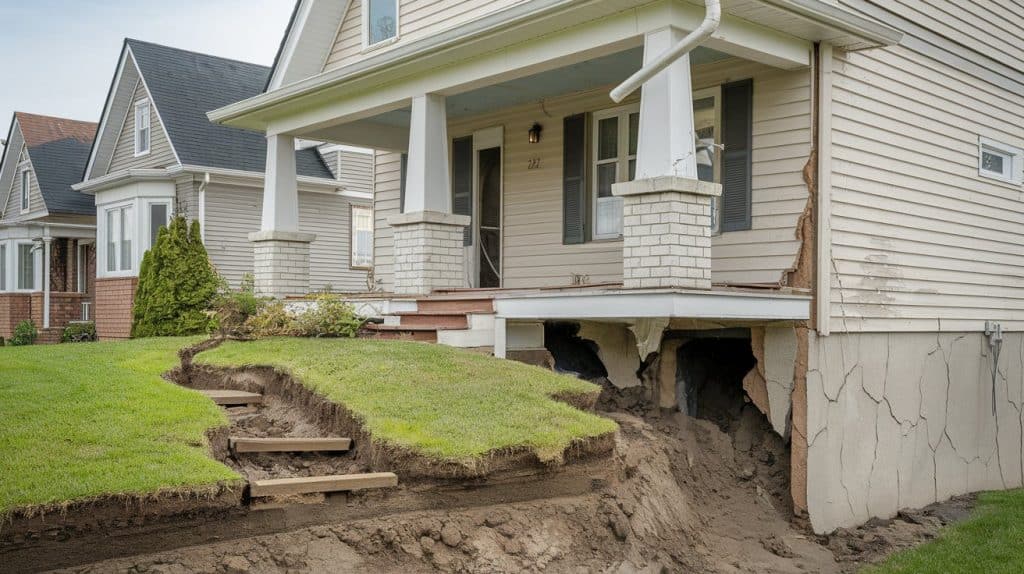
Subsidence creates serious structural problems that worsen over time. Understanding potential damage helps homeowners recognize when immediate action is needed.
Structural Integrity: Foundation movement compromises the entire building’s stability. Load-bearing walls crack and shift, weakening the property’s structural framework. Severe cases make buildings unsafe for occupation.
Interior Damage: As the structure shifts, interior finishes deteriorate. Plaster may fracture in multiple areas, gaps can form at joints, and surfaces can lose their alignment, affecting both safety and appearance.
External Problems: Brickwork develops visible cracks that allow water penetration. Roof tiles slip as the building frame distorts. Windows and doors warp in their frames, creating security risks and drafts.
Property Value Impact: Subsidence significantly reduces property values until properly fixed. Insurance premiums increase dramatically after claims. Some buyers avoid properties with subsidence history, making sales challenging.
Living Conditions: Daily life becomes difficult with jammed doors and windows. Visible damage causes stress and worry for residents. Repair work disrupts everyday routines for weeks or months.
Simple Maintenance Tips to Reduce Risk
Regular maintenance prevents many subsidence problems before they start. Small actions protect your property’s foundations and save thousands in future repairs.
- Check gutters and downpipes monthly to prevent water pooling near walls.
- Plant new trees away from buildings at safe recommended distances.
- Fix dripping taps and leaking pipes as soon as you notice them.
- Water garden areas near foundations during arid summer periods.
- Keep drains clear of leaves and debris to ensure proper flow.
- Monitor existing wall cracks with dated photographs every few months.
Annual property inspections catch problems early when repairs cost less. Building good maintenance habits protects your home’s structural integrity for years.
Final Thoughts
Subsidence might seem overwhelming, but understanding the basics puts you in control.
From spotting early warning signs to knowing when professional help is needed, you now have the tools to protect your property.
Small maintenance steps today prevent major structural problems tomorrow, saving both money and stress.
Every property faces different risks based on location, soil type, and surroundings. What matters most is staying alert and taking action when needed.
Your home deserves proper care, and catching subsidence early makes all the difference between minor fixes and major reconstruction work.
Have you spotted any warning signs in your property? Share your concerns or questions below. Your experience might help others facing similar issues!
Learn more about maintaining and improving your property.
Frequently Asked Questions
Should I Be Worried About Subsidence?
Subsidence occurs when the ground sinks beneath properties, pulling foundations downward and causing wall cracks. Early detection and treatment significantly reduce repair costs and structural damage.
Are There Signs Before a House Collapses?
Warning signs include cracking or crumbling concrete, interior wall and floor cracks, plus uneven or bowing walls and floors throughout the building structure.
How Expensive Is It to Fix a Sinking Foundation?
Foundation repairs typically cost around $5,000, ranging from $2,100 to $7,800. Serious problems cost $15,000+, while complete foundation replacement runs $20,000 to $100,000.
